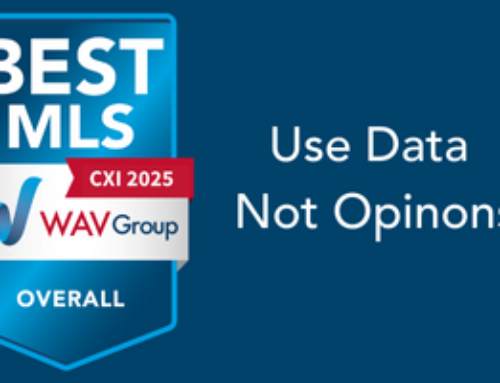 Zillow stock is down 68% since a year ago. The value of the company has fallen from $22.5 Billion in September of last year to $7 Billion today. The company’s revenue is just under $11 Billion. They have over $3.5 Billion in cash – about half of the stock’s value. They have $1.8 Billion in debt. They lose a little bit of money each year. So, what is next for Zillow?
Zillow stock is down 68% since a year ago. The value of the company has fallen from $22.5 Billion in September of last year to $7 Billion today. The company’s revenue is just under $11 Billion. They have over $3.5 Billion in cash – about half of the stock’s value. They have $1.8 Billion in debt. They lose a little bit of money each year. So, what is next for Zillow?
This week, Zillow announced that Stan Humphries is retiring. He is an economist and the person that some have called the father of the Zestimate. The primary reason we looked at Zillow’s financial history today was in reference to that. Today, 9.15% of Zillow stock is held by insiders. Many of the leading executives that founded the company have left to pursue other things. A big part of a company’s strategic plan is driven from its executives. The other strategic drive comes from the Zillow Board of Directors. Sometimes you can visualize where a company is going through the composition of the collective experience of their Board, but we do not see that here.
The Super App
Frankly, today’s homeownership apps (like Zillow’s proposed Super App) suck for three reasons. First, it takes a home inspector to figure out what is in the house. I understand why; homes are all unique, with custom parts. As my friend Dustin Gray of Milestones reminds me, there are about 150 systems in a home and literally hundreds of options for every system. Other than a few things like power connection, water connection, and internet connection, the home systems have non-standard parts.
Secondly, it takes a network of mostly local, specialized (or certified) professionals to maintain and repair the systems in the home. Zillow might be wise to snap up Angi – formerly Angi’s List whose stock has also tumbled from a high of $6.2 Billion a year ago down to $1.5 Billion today.
Thirdly, you need homeowners. This is where Zillow has an unleveraged strategic advantage – they have public record data on all parcels in America, and…. most of them have entered their contact information into Zillow.com or one of their other search portals over the years.
This big, harry challenge to create a Super App is in line with solving a very big pain for consumers. My 15-year-old tankless water heater started acting up last week. I had to go to the website, then find local repair shops, then call each one. Zillow does a remarkable job of connecting consumers with real estate agents and has a pretty damn good showing solution. Seems like a bridge that they can cross if they pick up a company like Angi. Unfortunately, Angi loses money too, so the combination of both companies might not make a great story to the capital markets, but I think it does to the consumer.
Acquire Profitable Companies
Zillow has a lot of cash. They can use that cash to buy back their stock – which the board approved recently. Otherwise, they can deploy that cash to buy companies that are profitable. More importantly, companies that will benefit from Zillow’s consumer reach and agent reach.
I was more than a little surprised that they integrated Down Payment Resource onto the property details page without buying that company. I also thought that they would have been wise to purchase Closing.com to tell consumers the full story of the transaction costs related to buying and selling. Closing.com offers options around core service providers in title, settlement, AMC, inspection, land surveys, etc. This “under the hood” part of buying and selling real estate would offer consumers the type of transparency that led to the development of the Zestimate.
Be a Real Broker
If there is one thing that HomeSmart has taught us, transaction management is the most important service of the brokerage. More than anything, HomeSmart is a bunch of transaction coordinators with brokerage oversight. With DotLoop in their hip pocket, Zillow can expand their brokerage services beyond their current status as a paper brokerage – today, they only earn brokerage referral fees at closing. Who knows more about successful agents than Zillow? They have agent ratings, response rates, and more on every agent! Seems like recruiting would be as simple as sending out invitations. As further evidence of this strategy, look no further than Side, one of the fastest growing brokerages in America who I believe passed Coldwell Banker in the San Francisco Bay area to become the second largest brokerage behind Compass. At $1.1 Billion in stock value today, that might make a great portfolio brand for Zillow to acquire. Redfin is at $500 million in valuation. Anywhere is at $907 million in valuation – and they actually make money.
Sell to CoStar
CoStar is interested in residential real estate, having acquired Homesnap, TenX/Auction.com, and Homes.com. They have a $30B market cap. They could easily consume Zillow to take the lead in residential real estate to complement their lead in commercial real estate.
Something Wild
It is kind of fun to engage in this type of thought exercise. I do not think that anyone saw Zillow getting into the iBuyer game the way that they did, much less their expedited exit. I guess that becoming the ‘used car lot’ of real estate did not pan out as expected.
What do you plan to do with your company? How do you plan to grow this year? What partnerships can you create to bundle services to serve clients and agents better?
Having these conversations create wild opportunities. Be sure to think about what’s next.




